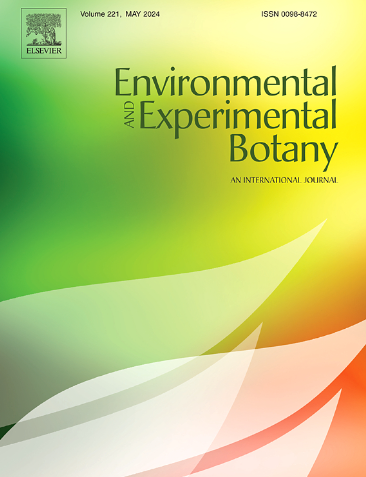季节变化而不是竞争驱动温带树木无机氮和有机氮的获取和内部分配
IF 4.7
2区 生物学
Q2 ENVIRONMENTAL SCIENCES
引用次数: 0
摘要
对树木而言,土壤氮的获取及其在不同组织中的内部分配受树种特性(如生长速率、养分需求)、树种间相互作用及其非生物环境的驱动。在生长季节,温度和降雨等非生物变化影响树木的生物地球化学氮循环以及氮的分配和再动员过程。我们研究了季节性和发育变异对木本幼苗的影响,重点是树与树的相互作用。研究了7种温带欧洲树种在发芽前、叶片发育后、叶片衰老前后4个叶片发育阶段对其无机和有机净氮吸收能力、氮向代谢活性组织和储存组织的内部分配以及形态性状的互作效应。在自然森林条件下,以种内或种间竞争的方式在中生态环境中生长了7种温带欧洲树种的幼苗。在生长季初,有机氮比无机氮更受青睐,而在秋季,所有氮源的吸收都是相等的。在种内,除卡柏属植物的氮素获取外,其他植物的氮素吸收和内部分配随生长季节的变化而变化。不同树种间氮素吸收和分配的差异更多地与树种特有的根系形态和生理性状有关,而与功能性状无关。相互作用的结果一般不受树木群落生长季节的影响,但取决于个体物种。因此,混交林应考虑季节变化和物种特异性。本文章由计算机程序翻译,如有差异,请以英文原文为准。
Seasonal changes rather than competition drive inorganic and organic nitrogen acquisition and internal allocation in temperate trees
For trees, soil nitrogen (N) acquisition and its internal allocation to different tissues are driven by species’ properties (e.g. growth rate, nutrient demand), the interactions among tree species, and their abiotic environment. Over the growing season, abiotic changes in, e.g. temperature and rainfall affect biogeochemical N cycling as well as N allocation and remobilisation processes in trees. We studied the influence of seasonality and developmental variation in woody seedlings, focussing on tree-tree interactions. We investigated the interaction effects among seven temperate European tree species on their inorganic and organic net N uptake capacity, internal allocation of N to metabolically active and storage tissues, and morphological traits at four leaf developmental stages over the growing season (i.e. before bud break, after leaf development, before / after leaf senescence). Seedlings of seven temperate European tree species were grown in mesocosms under natural forest conditions in intra- or interspecific competition. At the beginning of the growing season, organic N was favoured over inorganic N, whereas in autumn all N sources were taken up equally. Within species, N uptake and internal allocation generally varied over the growing season, except for N acquisition in Carpinus. Among tree species, the differences in N uptake and allocation were more related to species-specific morphological and physiological root traits, rather than functional properties. The outcome of the interactions was not generally affected within a tree community over the growing season but depended on the individual species. Thus, seasonal variation and species-specific properties should be considered for mixed species forests.
求助全文
通过发布文献求助,成功后即可免费获取论文全文。
去求助
来源期刊

Environmental and Experimental Botany
环境科学-环境科学
CiteScore
9.30
自引率
5.30%
发文量
342
审稿时长
26 days
期刊介绍:
Environmental and Experimental Botany (EEB) publishes research papers on the physical, chemical, biological, molecular mechanisms and processes involved in the responses of plants to their environment.
In addition to research papers, the journal includes review articles. Submission is in agreement with the Editors-in-Chief.
The Journal also publishes special issues which are built by invited guest editors and are related to the main themes of EEB.
The areas covered by the Journal include:
(1) Responses of plants to heavy metals and pollutants
(2) Plant/water interactions (salinity, drought, flooding)
(3) Responses of plants to radiations ranging from UV-B to infrared
(4) Plant/atmosphere relations (ozone, CO2 , temperature)
(5) Global change impacts on plant ecophysiology
(6) Biotic interactions involving environmental factors.
 求助内容:
求助内容: 应助结果提醒方式:
应助结果提醒方式:


